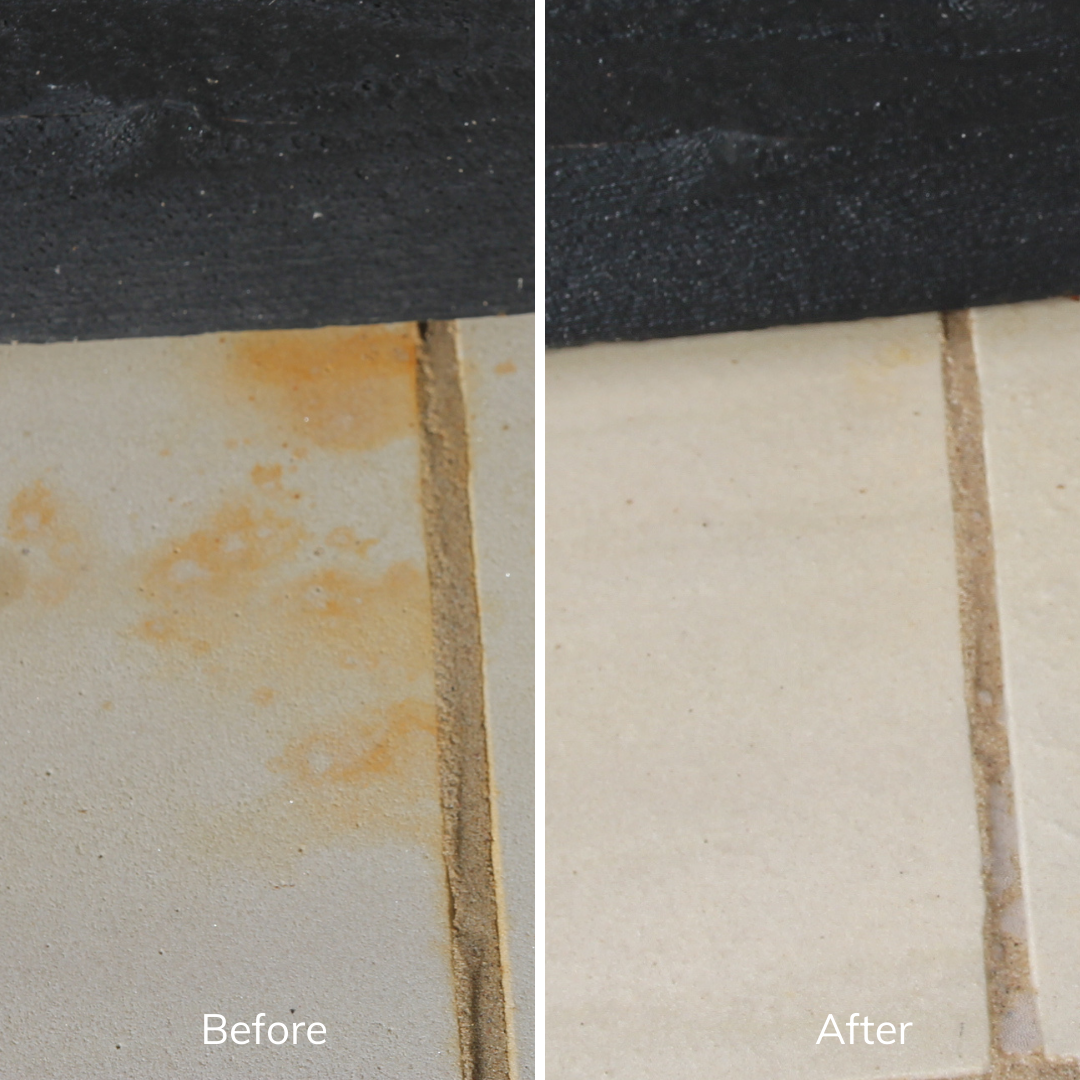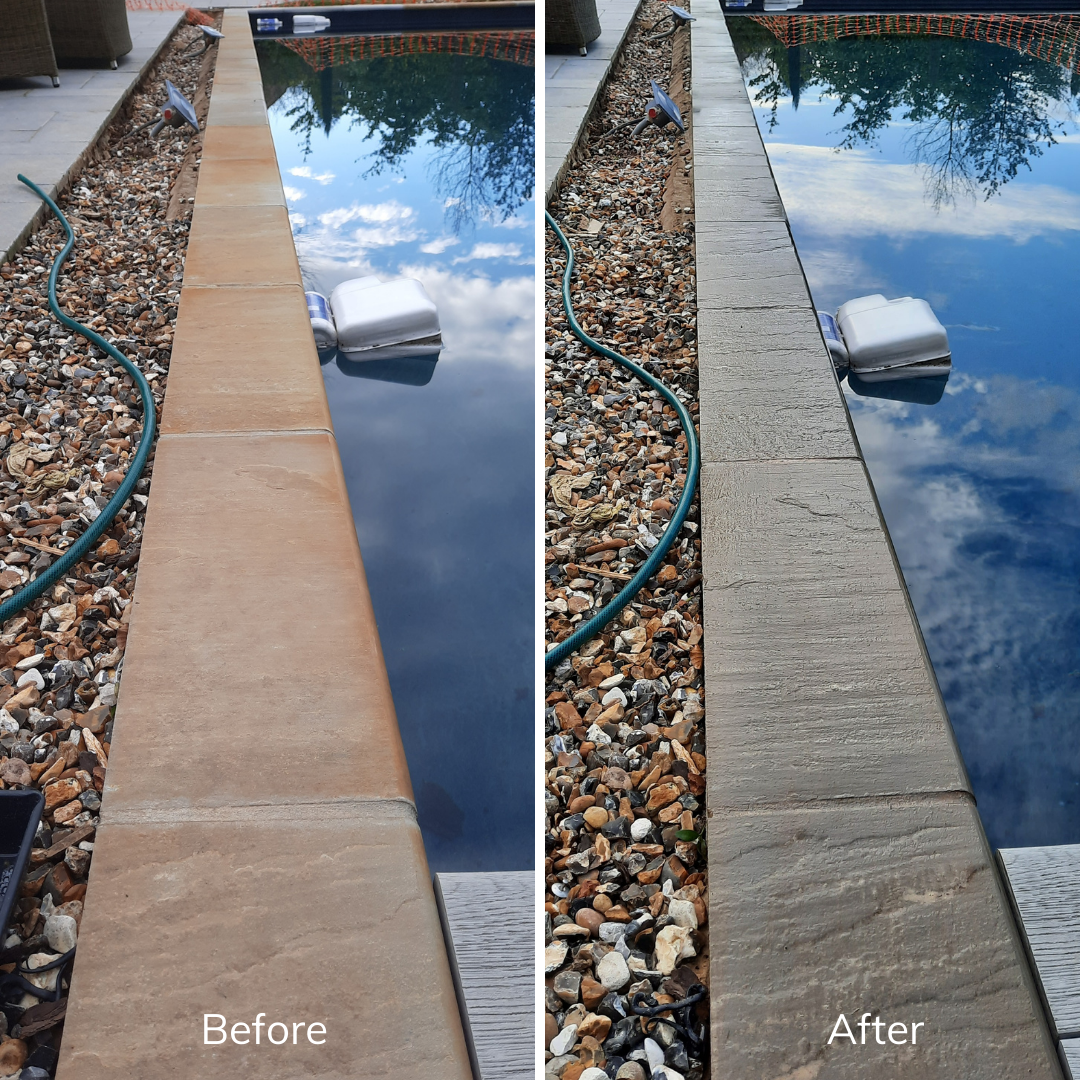Rob Parker’s Best Rust Remover will remove rust stains from stone paved surfaces.
To ensure you achieve great results using our product please read these guidance notes.
What causes rust staining on stone paving?
Naturally occurring rust deposits within Indian grey sandstone sometimes leach to the surface of the paving. These natural deposits are sometimes brought to the surface whilst the patio is laid, when harsh chemicals such as brick acid have been used. (We do not recommend brick acid on any natural paving – instead try our Rob Parker’s Best ConClear, a much gentler but still effective product).
Grey sandstone from some sources seems to suffer more from these deposits than others. Our own grey sandstone doesn’t suffer so much as others we have heard of. Wherever you have bought your grey sandstone from, rest assured your patio can be restored, by using Rob Parker’s Best Rust Remover. Customers who have experienced rust staining on Kandla grey sandstone report great results using our product.
Rob Parker’s Best Rust Remover will also remove the tanning stains that sometimes occur on imported Indian sandstone. These stains are caused by the transportation crates that the paving has been shipped in. Rust deposits can also occur from metal garden furniture being left on the surface, and beginning to rust.
Moss killing lawn feed is made from ferrous sulphate. If it is accidentally spilt on the patio, and then reacts with dew, iron spots will appear on the patio.
Rob Parker’s Best Rust Remover can address all these problems.
For best results using Rob Parker’s Best Rust Remover:
We suggest you try a test area first. Find a stained slab and try different concentrates until you find the most effective for you. Effervescence will occur when the rust is being treated.
Work a small area at a time
Apply to small areas at a time, up to 5 sqm at once. (As a guide 1Litre will cover 3-5sqm, but this is dependant on the severity of the problem).
By working on a small area at a time, you will be able to manage the activation process, if you try to work over too large an area, evaporation will begin to occur and activation will cease. You can aid the prevention of evaporation by covering the surface with plastic if necessary.
Apply product to dry surfaces
The product is very liquid and therefore free flowing. This means it will go a long way, but care should be taken to only treat the required area.
Apply to dry stone areas to ensure the best activation of the product.
For best results apply with a paint brush; this will enable you to agitate the surface as you apply ensuring excellent contact with the stone surface.
Once the selected area is covered with Rob Parker’s Best Rust Remover, start again, repeating the above method, by either reapplying product if it has dried or agitate existing product thoroughly on the surface if still wet.
It is important to keep the area you are treating wet with product, as once its dried it is no longer active. Effervescence will occur when it is activated. Use as much as required to achieve the desired result.
Repeat again unless staining has disappeared.
Thoroughly rinse product off once desired effect has been achieved.
Be careful where product is used
Prevent product from dripping onto plants, clothing, skin, etc, as this is a mild acid that will burn. Keep pets and children away from treatment areas during active treatment.
Do not use on limestone or polished stone surfaces, as this product will burn the stone surface.


